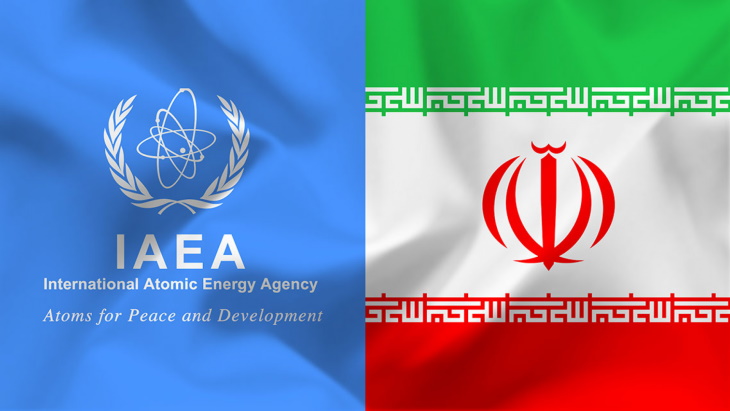In his Introductory Statement to the IAEA Board of Governors on 13 September last year, IAEA Director General Rafael Mariano Grossi said the presence of multiple uranium particles of anthropogenic origin at three locations in Iran not declared to the Agency, as well as the presence of isotopically altered particles at one of these locations, is "a clear indication that nuclear material and/or equipment contaminated by nuclear material has been present at these locations".
Iran had still not provided the necessary explanations for the presence of the nuclear material particles at any of three locations where the IAEA has conducted complementary accesses, he added. Nor has Iran answered the IAEA's questions with regard to another undeclared location or clarified the current location of natural uranium in the form of a metal disc.
Following a meeting in Tehran on 5 March between Grossi and Vice-President of Iran and AEOI President Mohammad Eslami, a joint statement was issued by the two organisations.
According to the statement, the AEOI has agreed to provide the IAEA no later than 20 March with written explanations including related supporting documents to the questions raised by the IAEA which have not been addressed by Iran on the issues related to the three locations.
Within two weeks of receiving the AEOI's written explanations and related supporting documents, the IAEA will review this information and submit any questions to the AEOI. Within one week after the IAEA has submitted to the AEOI any questions on the information it provided, the IAEA and AEOI will meet in Tehran to address the questions. Separate meetings will be held for each location. Following an evaluation by the IAEA, Grossi will aim to report his conclusion by the June meeting of the Agency's Board of Governors.
At a meeting of the Board of Governors on 7 March, Grossi noted that up until 23 February 2021, the IAEA verified and monitored the implementation by Iran of its nuclear-related commitments under the Joint Comprehensive Plan of Action (JCPOA). However, since that date, these activities have been seriously affected by Iran's decision to stop the implementation of its nuclear-related commitments under the JCPOA, including the Additional Protocol.
"Following constructive consultations with Vice-President Eslami on 15 December 2021, new terms were agreed in relation to the Agency's monitoring and surveillance equipment under the JCPOA," Grossi told the Board.
"This enabled the Agency to reinstall cameras in the workshop at Karaj and to replace all storage media in JCPOA-related cameras throughout Iran. However, the repeated prolongation of the agreement I reached with Iran in February last year, which has now been in place for over one year, will pose a significant challenge to the Agency's ability to restore continuity of knowledge, which has been widely recognised as essential in relation to a return to the JCPOA.
"There is a lot of work ahead of us and we have already started," he added.
Speaking to journalists following the meeting of the Board of Governors, Grossi said: "It is quite clear that once there is a deal - if there is a deal - the work for the IAEA will be huge, simply huge, because we will have to reconcile lots of technical elements and information that have not been subject to the stringent verification system mechanism that we used to have with a full JCPOA when Iran decided to stop applying this and to cease their permission for our inspectors to access and the implementation of the Additional Protocol.
"If there is an agreement, we hope to move on to solid ground, but there is a gap and this is what we have to do. We have to look at what has been happening, we have to reconcile the information, we have to make sure that whatever has been happening and we were not being able to verify in the right way is perfectly accounted to the ground. It's huge work and we are going to be needing additional resources."
The JCPOA was agreed in 2015 between Iran and the so-called P5+1 - the US, UK, France, China, Russia and Germany. Under its terms, Iran agreed to limit its nuclear activities including uranium enrichment over a 15-year period and to allow in international inspectors in return for the lifting of economic sanctions. The USA withdrew from the deal in May 2018 and in January 2021 the IAEA reported that Iran had resumed enriching uranium to 20% purity at its underground Fordow plant.





_91467.jpg)
_47120.jpg)
_16439.jpg)






